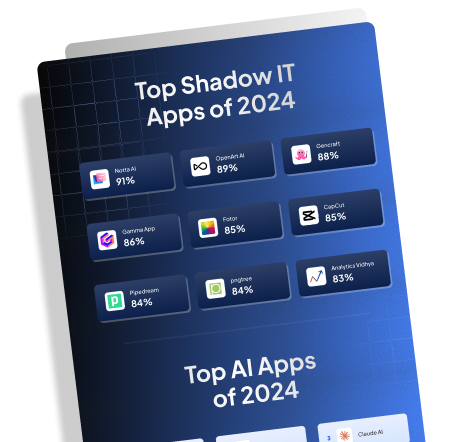Ever wonder why SaaS pricing feels like negotiating with a mysterious oracle? Striking the right balance between cost and value can be a daunting task, but fear not—we understand just how confusing and stressful it can be. In this article, we’ll cut through the clutter to help you secure better pricing and terms with your SaaS vendors.
Understanding Your Leverage
How much do you really know about your current SaaS usage? Knowledge is power in any negotiation. When renewing a SaaS subscription, utilizing a SaaS Management Platform (SMP) like Torii can provide valuable insights into license utilization rates, benchmarking your app spend, and more. This data allows you to understand your usage patterns comprehensively, creating a stronger foundation for negotiation.
Optimizing License Utilization
Why pay for what you don’t use? License utilization rates can significantly impact your bargaining power. With accurate insights from tools like Torii, you can identify underused licenses and adjust your required volume accordingly. Highlighting that you are informed about your usage patterns can bring vendors to the table with more flexible terms and potentially reduced costs.
Benchmarking App Spend
How does your spending compare? Benchmarking your app spend against industry standards gives you a critical edge. If you’re aware that the pricing offered by the vendor exceeds industry norms, you can argue for better pricing. Vendors are often willing to adjust their proposal when they realize that their pricing is not competitive.
Preparing for the Renewal
What should you prepare? Before entering negotiations, compile a detailed report of your current SaaS usage, costs, and benchmarks. This preparation shows the vendor that you have done your homework and understand the market. It also indicates that you are willing to take your business elsewhere if necessary.
Negotiating Terms Beyond Price
Is pricing the only factor? While price is essential, other terms can also be negotiated for better efficiency. Consider aspects such as contract length, payment terms, and service levels. For instance, negotiating a longer-term contract with more flexible payment options or enhanced support can add considerable value to your deal.
Frameworks for Effective Negotiation
What mental models can guide you? Think in terms of leverage and mutual benefit. Understanding your value to the vendor, be it due to long-term commitment or volume of business, can create a favorable position. Conversely, comprehend what drives the vendor, such as revenue continuity or customer retention, to find a win-win outcome.
Acknowledging Complexity
Why is negotiation tricky? SaaS negotiations can be complex due to varying aspects like the number of licenses, specific features, and long-term requirements. Recognize this complexity and be prepared to approach the negotiating table with flexibility. Employing a mix of factual data and strategic thinking can help navigate through these complexities effectively.
In the next section, we’ll delve into specific tactics and best practices that can further enhance your negotiation efforts, ensuring you secure the best possible pricing and terms with your SaaS vendors.
Best Practices for Effective SaaS Vendor Negotiation
So how do you move from preparation to action? Now that you’ve built a solid foundation with insights, benchmarks, and a well-prepared report, it’s time to apply specific tactics and best practices to enhance your negotiation process. Here are some actionable steps that can help you secure the best possible pricing and terms:
1. Timing Your Negotiations
When is the right time to negotiate? Timing is critical in negotiations. Vendors are often more flexible during their fiscal year-end when they’re keen to close deals to hit targets. Initiate discussions at least 3-6 months before your renewal date to allow ample time for back-and-forth negotiations. This period also shows the vendor that you are serious and well-prepared, not just making a last-minute demand.
2. Engaging Multiple Vendors
Why talk to more than one vendor? Increase your leverage by engaging multiple vendors. By obtaining quotes from different providers, you create competition, which can drive down prices. Let your current vendor know that you are evaluating alternatives; this can often prompt them to offer better terms to retain your business.
3. Bundling Services
Can combining services help? Vendors may offer discounts for bundling multiple services or products. If you’re already using, or planning to use, multiple solutions from the same vendor, negotiate a bundled deal. This can lead to significant cost savings and simplify vendor management.
4. Establishing Long-Term Relationships
Is a long-term deal beneficial? Vendors value long-term, stable relationships. If you’re satisfied with the service, negotiate multi-year contracts. These agreements can often yield better pricing and terms, such as fixed rates or enhanced support, as vendors aim to secure steady revenue over time.
5. Customizing Your Contract
How flexible is your agreement? Don’t hesitate to request custom terms that better suit your needs. This could include flexible payment schedules, clauses for scaling up or down without penalties, or specified service level agreements (SLAs). Tailored contracts can provide greater control and predictability, aligning the agreement closely with your business requirements.
6. Involving Key Stakeholders
Who should be at the table? Collective bargaining can be very effective. Include key stakeholders such as your CIO, procurement team, and end-users in the negotiation process. Their insights and support can add considerable weight to your negotiation stance, ensuring all critical requirements are addressed and agreed upon.
7. Adopting an SMP
How can you streamline this process? Leveraging a SaaS Management Platform (SMP) like Torii can provide robust data and insights that bolster your position. Such a platform helps track usage, manage licenses, and even forecast future needs. By incorporating an SMP, you position your organization as informed and strategic, which can lead to more favorable outcomes. Learn more about Torii.
By employing these best practices, you can approach your negotiations with a clear strategy and robust insights, making it more likely to achieve the best possible pricing and terms from your SaaS vendors. Always remember, negotiation is as much about building a mutually beneficial relationship as it is about securing favorable terms, so keep the lines of communication open for future discussions and adjustments.





